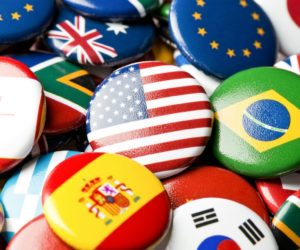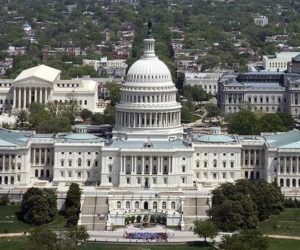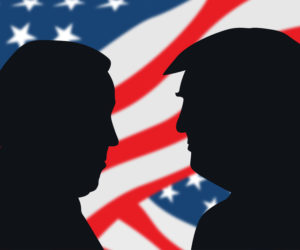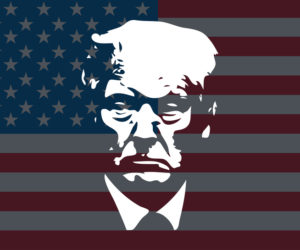In Afghanistan, the US is heading towards futility if not defeat mainly because no policy maker in Washington or its allied European capitals is willing to notice the bull in the china shop obvious to others.
Washington and its NATO allies are focused on the awful recent elections. They are running in circles trying to establish democracy and rule of law in country where the lifestyle of rural folk dominated by clans and tribes has not changed significantly in 1000 years.
What is obvious to non-Americans is that Afghanistan is in the midst of several civil wars that have nothing to do with keeping Americans safe from Al Qaeda or installing democracy of any kind. Ordinary people are fed up of being the collateral damage of violence from all sides. They turn up to vote hoping for some sort of breathing space. Their allegiance is to safety in their communities, not to building a cohesive, viable or democratic nation.
Almost everyone in the region knows the issues but Washington seems to be in denial as President Barack Obama prepares for a new agenda of nation building bolstered by another troop surge. Higher casualties are sold as a necessary price although they stem increasingly from ignoring or misreading the signposts.
One major civil war is between non-Pashtuns and Pashtuns, who have long seen large chunks of modern Afghanistan and Pakistan as being rightfully their homeland. In this war, Pashtuns are fighting the powerful Hazaras, Uzbeks and Tajiks, who live mostly to the West and North, to free themselves from those “foreigners”.
The Presidential challenger Abdullah Abdullah cut his teeth in the Northern Alliance comprising mainly Tajiks. The Alliance was a bitter enemy of the Pashtun Taliban and later helped America’s lightening war to dethrone it. Pashtuns including many who oppose the Taliban dislike him.
Another war is within the Pashtuns, between those who favor Islamic fundamentalism and others who want to enter the modern world. The Taliban are Pashtun fundamentalists who enjoy strong support in rural areas where obscurantist forms of Islam are mixed with tribal customs cruel to women and girls.
Hamid Karzai is a Pashtun modernizer and cultivates links with Hazaras, Uzbeks and Tajiks to create semblance of a national unity government. That is why the Taliban hate him so deeply. Failing domination of all Afghanistan, they want to split the country to create a Pashtun homeland in their own image.
Al Qaeda, on which the West is so fixated, is marginal to these conflicts. They hide among the Taliban because of the fraternity of Islamic fundamentalism. They influence nothing within Afghanistan.
Washington is trying to blame its own policy blindspots on the Karzai regime’s corruption and poor governance. Currently, it is pushing to combine the carrots of nation-building and economic development with the big sticks of a US troop surge, strengthened Afghan army and beefed-up local warlords.
Arming warlords of any kind is a big mistake. It changes the balance of power among local factions, making the civil wars much more lethal. The current national army is not a genuine non-partisan outfit. It is composed mainly of recruits from the warlord militias who may later split to fight for their clans.
As for nation building, wherever Americans manage to build roads, schools or hospitals their work will be destroyed by whichever warlord feels ignored. If nation building succeeds, people will no longer need to kowtow to the feudal lords. So, those lords will impede developmental work unless they handle the money allowing them to take the credit, or a power-sharing arrangement guarantees their wealth.
The Taliban will not allow progress because that would unmask their backwardness. They are using their best option, which is to blame foreign invaders for everything while prolonging the war to draw attention away from their own inadequacies. They will keep the war simmering to prevent Americans from leaving but will not let it become so intense that Washington destroys them utterly. An American withdrawal would remove their most potent recruitment tool as self-styled saviors of rural Pashtuns from “kafir” non-Muslims.
Equally lethal civil wars are taking place in neighboring Pakistan, pitting Pashtuns against Punjabi and Sindhi Pakistanis. The Pashtuns want to recover their traditional tribal territories along Pakistan’s North West frontier region while defining borders peacefully with Baluchis in the South East.
Another conflict in Pakistan has pitted Islamic purists inspired by the Afghan Taliban against other Pakistanis. The purists, often called the Pakistani Taliban, are mostly Punjabis and Sindhis who are fighting against others in their communities to prevent the country’s modernization. The Pakistani Taliban includes some Pashtuns who are using them as a cover to get rid of non-Pashtuns from the territories in Pakistan they claim as a Pashtun homeland.
Pakistan’s army woke up to these dangers recently when some Pakistani Taliban took over regions like Swat, which are distant from the Afghanistan frontier. But it has killed thousands of civilians and displaced nearly two million without destroying the Taliban who melted into the mountains.
They will probably return in winter when the army may be less active because of awful roads. The region is ideal ambush territory, especially when bad weather prevents air cover and hinders the primitive walkie-talkie communication between army patrols. The local Taliban travel on motor bikes and filtering back into villages and small towns is quite easy.
Obama’s best-laid plans will be no match for this cauldron that houses nearly 200 million people of at least a dozen ethnic origins speaking several hundred dialects. The policy debate in America in coming days should not take official analyses at face value. It must ask tougher questions.
















